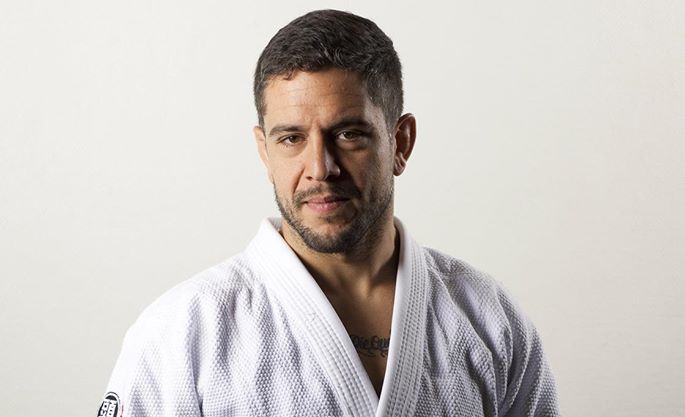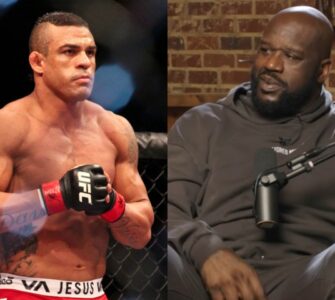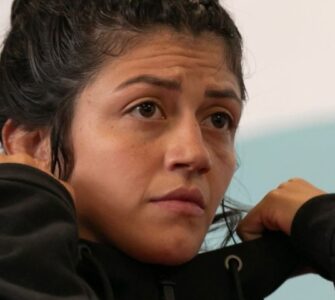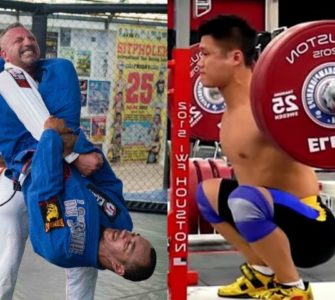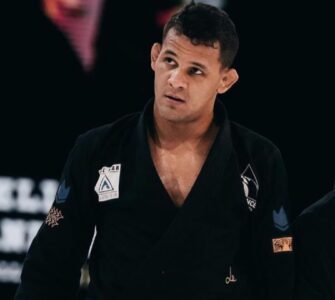1/2 Chilean 1/2 Swedish BJJ black belt Waldo Zapata who runs his own academy Viva Zapata, in Sweden talks to BJJ Eastern Europe about the early days of BJJ in Sweden, his BJJ journey and much more:
Hi Waldo, can you please introduce yourself to the BJJ community of Eastern Europe?
My name is Waldo Zapata and I was born in Sweden, on March 18th in 1976. My father is Chilean and my mother is Swedish. I’m a BJJ black belt and have an academy in Sweden Viva Zapata BJJ.
You are one of the first people to train BJJ in Sweden. How did you start?
My martial arts career started in 1980, when my father brought me to his Kyokushin Karate practise. This was one month before my fourth birthday. I liked it, got my karate go for my birthday and then never quit martial arts. Basically, I sucked at every other sport haha! I did like most kids and tried all of the martial arts I could find. Some only for a year, others for a few. In 1996 I attended a seminar with Alexandre Paiva and that was the turning point. Since then I have done BJJ more or less full time. I got my blue belt and my purple belt from Alexandre, but when the Alliance split into Master (eventually Brasa), I ended up not in a team. The academy I was teaching at wanted to focus on MMA and I didn’t have the capacity to run my own place, without local support. There simply was no Alliance representatives in the area. I was invited by a friend to train at Gracie Humaíta, so I spent three months there. I was blessed with the opportunity to rain first hand with all the studs there, but coming back to Sweden I was still facing the same problem: there was no Gracie Humaíta around either. Luckily, a friend of mine from the south of Sweden (Peter Blackwell) called me and wanted to book a meeting. He flew to Stockholm, we hooked up, he told me he would represent Leozinho’s recently formed Master Team and asked if I wanted in. Done deal!
How did the next few years play out with Master team?
The next few years I spent building the team in Stockholm, while Peter did the south of Sweden. I traveled to Brazil a lot, trained extensively with Leo and Rico, but also a lot with Demian and Robert Drysdale, not to mention Octavio Coutu Jr “Ratinho”. All of these guys also came to my academy and stayed in my house. Sometimes for several months at a time!
Eventually, politics got the best of Brasa and there was another split. I elected to go with Leo (who gave me my blackbelt) and became a Check Mat representative. However, more and more, I started to notice that my view on team politics did not match everybodyelses, so I friendly went out and I now run my own academy Viva Zapata.
Who were your greatest influences in Jiu-Jitsu?
My greatest influences and the guys whom I am most grateful to, when it comes to developing as a jiujitsu practitioner are: Alexandre Paiva, for teaching me the technical foundation and the importance of pressure. Leonardo Vieira, for showing me the importance of strategy and technical adaptability. Demian Maia, for teaching me the importance of always drilling and refining the basics. Robert Drysdale, for teaching me to always go for the kill. Ricardo Vieira, for teaching me that technique is only limited by imagination. Octavio Couto Jr, for teaching me to teach. And Peter Blackwell, for teaching me how to overcome my fear of competing. I would also like to mention Omar Bouiche, my first instructor and to this day the greatest grappler I have ever known.
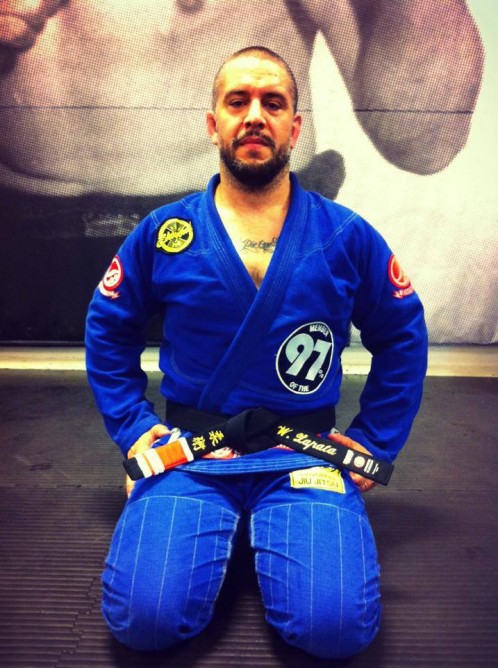
How about your competitive career?
Competition never was my thing, until I met Peter. I won the Europeans in 2007, as you know. That’s my only gold. I have 2nd and 3rd places as brown belt in the Europeans, Inernational Masters, Copa do Mundo and a few smaller competitions.
I retired from competing in 2007, after I fractured a vertebrae in my neck and got two herniated discs. After that I dedicated myself entirely to teaching.
Tell us more about your academy Viva Zapata, and your students. What do you do different from other teams?
The name of my academy is Viva Zapata. The name comes from two things: my last name and also the well known Mexican freedom fighter. Are we related? Ask CSI.. Haha!
I want my team to represent a rebellion against the norm in team politics. We are extremely open to visitors from other academies and I encourage my students to visit other academies, if they get the possibility. I am of the firm belief that the only team in BJJ is Jiu-jitsu. I also believe that for Jiu-jitsu to keep evolving, there has to be a free flow of knowledge. I think that this is of course why there are competitions, but I also believe that the conditions for instant adaptation and/or assimilation of technique is not optimal while competing. To much mental pressure, performance related stress and pure strength is involved. I would say that competition sharpens technique and shaves off what is not yet perfected or fully incorporated. But I do believe that while sparring playfully with someone who I don’t know, the technique will grow faster. Then I drill it, adapt it and tweak it at my academy. Also, if someone comes to my academy, figures out or strategy and/or a certain technical variation, then that forces us to evolve, perfect and renew. Some teams close their doors to other academies or at least “filter” what they do and to me that is very shortsighted. It’s basically inbreeding..
How different is the training mentality between Swedish, other Europeans and Brazilians? (For competitors and recreational students)
I would say that the European mentality, when it comes to training, is pretty scientific in general. People take their nutrition very seriously, their strength and conditioning also. In Sweden, this has been an on-going trend for a couple of years. I do see the value with this, but I think that if people put too big an emphasis on these things too early, then that will actually make it harder for them to evolve their technique fully. If you are very strong and have the conditioning to enforce your will, then your technique and your strategy may never need to evolve. Think of it like this: it takes years to develop an large library of techniques. It takes even longer to understand at what point of a fight you should use a certain one. But you can get really strong and fit in 6 months.. Basically, you can develop bad habits that are really hard to remove, once you reach the higher belts, where your opponent is technical enough to endure a physically imposing attack. In Brazil, most of your conditioning and strength comes from sparring. However, they have also begun to incorporate functional training, olympic strength routines and mobility. But never by negating sparring or specific positional training. Just like soccer, haha!! Recreational students are the same everywhere. They basically just want to learn, be able to participate and maybe make the competing athletes sweat a little in practise.
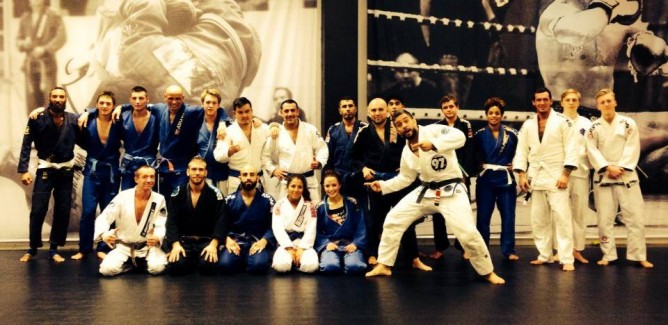
What are your thoughts on ‘creontes’ in Jiu-Jitsu?
Creontes.. Well, that’s a word I really despise but at the same time understand. I understand it, as an instructor. Sometimes, one invests a lot of time and emotional value in a student. The student becomes your friend, and you start to think about how he/she can carry on your idea/expression of Jiu-jitsu. And then they leave. This, of course, makes you sad, disappointed and maybe angry. Even more so, if it is your longtime training friend, whom you have shared your Jiu-jitsu journey with. A team mate, so to speak. And then maybe you have to face him/her on the competition mats.. But, the thruth is that everybody who decides to leave an academy for another, do so because of a) disappointment, b) a firm belief that further progress is impossible if they stay or c) any kind of personal reason, such as relocating, new working hrs or any such thing. All those actually comprise a fully understandable reason. People must be allowed to do for themselves what they feel is best. BUT: it has to be done correctly, for the right reasons and in the open. Basically, open and honest communication. Sadness and disappointment is temporarily inevitable. Resentment is not. Never leave a bad taste. Always give credit, where credit is due! After all, if there had never been any creontes, there would only be Fadda and Gracie today, right?
Best BJJ in northern Europe: Sweden or Finland and why?
The best BJJ in northern Europe is still in Sweden, if you look at IBJJF competition results. I think this is because we simply had a faster spread of BJJ, when it first got here. Now, it’s evening out. We just got a head start. However, I think this might change soon. BJJ is really exploding in Finland as well and I know of more than a few really good instructors and competitors. I think that Norway is really up there as well. And Denmark! Basically, we are really good, up here in the north! And humble, haha!!
What is next for you and your team in 2014?
I have great hopes for the rest of 2014. My students have done really well in competitions so far and I have a whole new set of hungry white belts and blue belts. Also, I will have a few higher ranked students who will most likely do well. And I just might try to fight one more competition myself. To earn my Açaí! Besides the competitions, I am working very hard to get some top notch guys to Sweden. I will have Rodolfo Vieira over again, together with Dean Lister and Ida Hansson at www.mmacademy.se and also Keenan Cornelius at my own academy in september. I already had Octavio “Ratinho” Couto Jr over and last week Alberto crane taught an awesome seminar at my gym. There will be at least one more big name seminar before Christmas. Basically, I want to make sure that my students stay inspired and exposed to really good Jiu-jitsu, in all shapes and forms!

